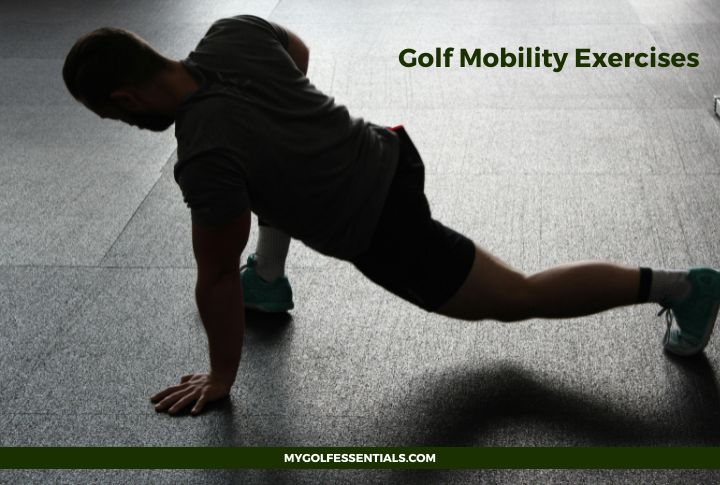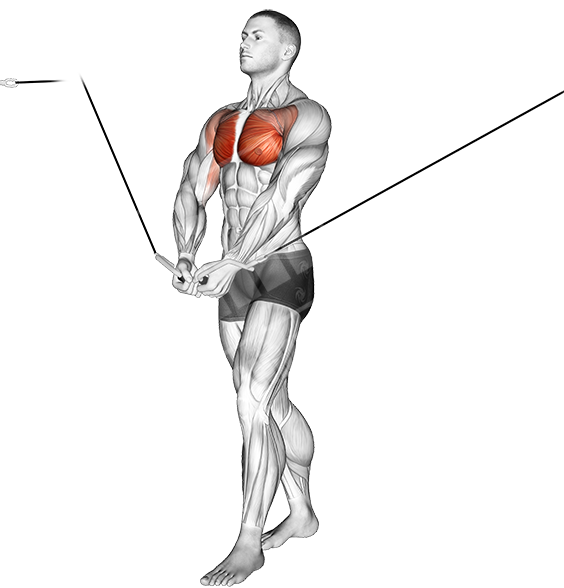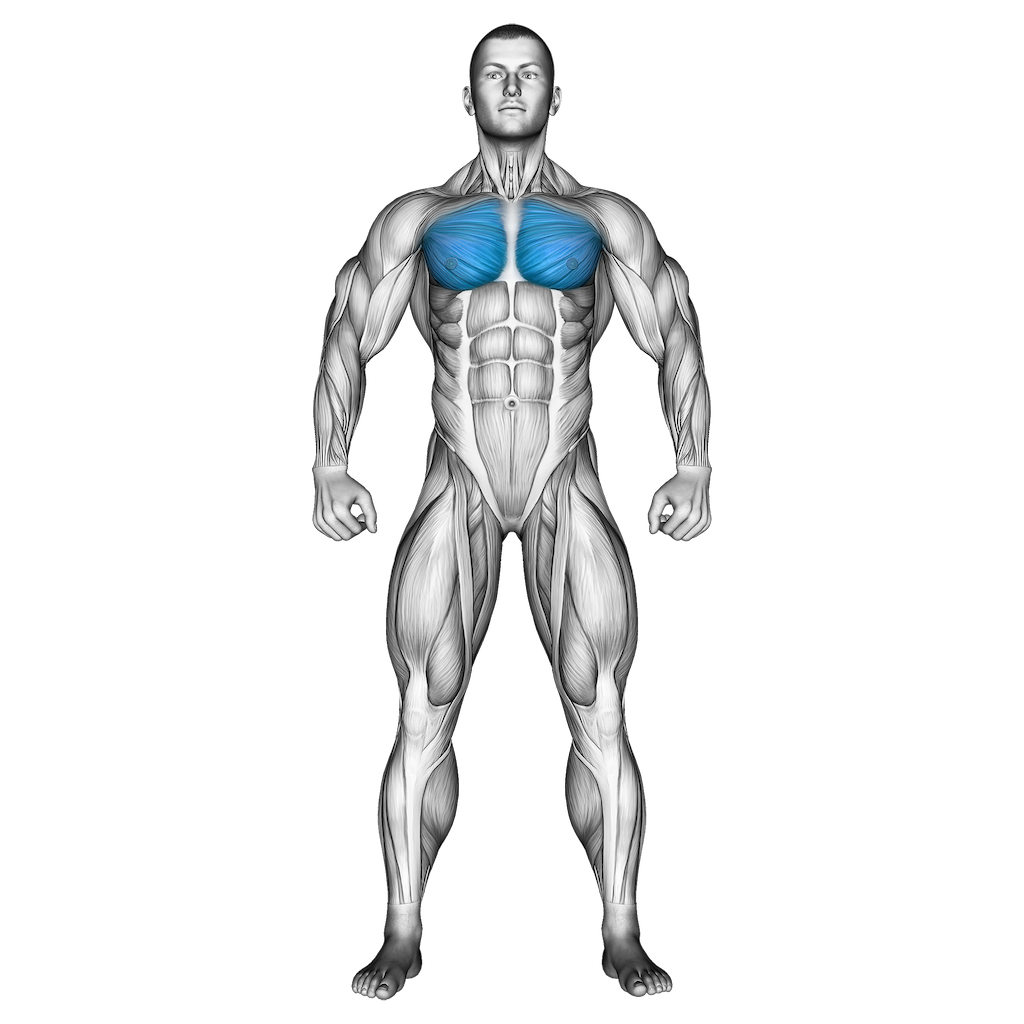
Have you ever wondered why some golfers seem to swing with effortless power and precision, while others struggle to find their rhythm? What if the secret to unlocking your best game isn’t just about practice, but about how well your body moves?
Mobility plays a huge role in your golf performance, influencing your swing mechanics, flexibility, and even your posture. In this article, we’ll explore the key golf mobility exercises every golfer should be doing.
Whether you’re looking to improve your range of motion, increase your swing power, or simply reduce the risk of injury, these exercises are your first step toward mastering your game. Ready to move better and play better? Let’s dive in!
What Does Mobility Mean in Golf?
Mobility is all about how well you can move your body through a full range of motion while staying strong and stable. In golf, this means being able to swing freely without stiffness or restrictions.
It’s different from flexibility, which is just about stretching your muscles. Mobility includes strength, coordination, and control over your joints.
When you have good mobility, you can rotate your torso and hips smoothly, making your swing more powerful and reducing your risk of injury.
Key Areas to Focus on to Improve Golf Mobility
Certain parts of your body play a bigger role in your golf swing than others. Here’s where mobility matters most:
- Hips: Your hips help you rotate fully for a strong swing. When they move well, your upper and lower body work together better, creating more power and distance. If your hips are too tight, you might overcompensate with other muscles, which can lead to injuries.
- Shoulders: Good shoulder mobility lets you complete a full backswing and follow-through. If your shoulders don’t move well, your swing won’t be as efficient, and you could put extra strain on them, increasing the risk of injury.
- Spine: Your spine keeps you balanced and helps with rotation during your swing. If it moves properly, you’ll have better control and posture. But if your spine is stiff, your swing mechanics can suffer, putting more stress on other parts of your body.
Why Better Mobility Helps Your Golf Game
Golf mobility exercises come with several big benefits:
- More Power and Distance: When you move better, you can generate more speed with your club, helping you hit longer, more controlled shots.
- Fewer Injuries: Improving mobility reduces the risk of common golf injuries like lower back pain and shoulder strains. A body that moves properly is less likely to get hurt.
- Better Swing Consistency: Mobility helps you maintain proper form, leading to more consistent swings and improved accuracy.
- Faster Recovery: The better your mobility, the quicker your body recovers after a game or practice session, so you feel fresher for your next round.
Top Golf Mobility Exercises
Let’s discuss some of the best golf mobility exercises to improve your golf performance.
Golf Rotational Mobility Drills
A powerful and controlled golf swing relies on excellent rotational mobility. Golf rotational mobility exercises will help you improve your torso rotation, enhance flexibility, and generate more speed and accuracy in your swing.
Thoracic spine rotation and dynamic neck stretch are two golf rotational mobility drills. How do you perform them? Keep reading to find out.
1. Thoracic Spine Rotation
Your thoracic spine (upper back) plays a big role in your golf swing. It helps your upper body rotate while keeping your lower body steady. If this area moves well, you can generate more power and stay balanced throughout your swing.
Better mobility here also helps you swing more smoothly, increasing your clubhead speed and distance. Plus, it reduces the risk of injuries caused by poor movement.
How to Do It
- Sit on the floor with your legs stretched straight in front of you.
- Put your hands behind your head and keep your elbows wide apart.
- Slowly turn your upper body to the right as far as you can, keeping your hips and lower body still.
- Stay in the rotated position for 2-3 seconds and take deep breaths.
- Come back to the center and rotate to the left side.
- Do 10 repetitions on each side.
Want to make it harder? Try holding a medicine ball or weight plate while rotating. This adds resistance and helps build strength in your upper back.
2. Dynamic Neck Stretch
Your neck mobility affects your head position during your swing. If your neck moves well, it helps keep your head aligned with your spine, improving your focus on the ball and making your swing mechanics smoother.
If your neck is too stiff, you might struggle with posture and lose accuracy or power.
How to Do It
- Keep your feet shoulder-width apart.
- Tilt your head gently to the right, bringing your ear toward your shoulder (but don’t raise your shoulder).
- Stay in this position for 2-3 seconds while feeling a stretch on the opposite side of your neck.
- Move back to the center, then tilt your head to the left and hold for another 2-3 seconds.
- Now, lower your chin towards your chest and hold for 2-3 seconds, then look up toward the ceiling and hold.
- Repeat the whole sequence 5-10 times.
Golf Hip Mobility Exercises
Strong and flexible hips are essential for a smooth, powerful golf swing. These exercises will improve your hip mobility, allowing for better rotation, stability, and balance throughout your game.
1. Hip Flexor Stretch
Your hip flexors, muscles at the front of your hips, help you maintain proper posture and alignment during your swing. If these muscles are too tight, your hip movement becomes restricted.
This can force your body to make compensations that hurt your swing mechanics. Poor hip mobility can also reduce your power and accuracy. Stretching your hip flexors makes your swing smoother, and stronger, and lowers your risk of injury.
How to Do It
- Start in a kneeling position with your right knee on the ground and your left foot in front, forming a 90-degree angle at both knees.
- Keep your core tight to stay stable.
- Gently push your hips forward while keeping your back straight. You should feel a stretch in the front of your right hip.
- Deepen the Stretch (Optional). Raise your right arm overhead and lean slightly to the left to stretch even more along your hip flexor and side.
- Stay in this position for 20-30 seconds, breathing deeply.
- Go back to the starting position and repeat on the other side.
- Perform this stretch 2-3 times on each side for the best results.
2. Seated Groin Stretch
Your adductor muscles (inner thighs) play a key role in hip mobility, which is crucial for your golf swing. When these muscles are flexible, you can rotate your hips more efficiently, improving your power and stability.
This stretch also helps counteract tightness from sitting too long or repetitive golf movements.
How to Do It
- Start by sitting on the floor with your legs stretched straight in front of you.
- Position Your Legs. Bend your knees and bring the soles of your feet together, letting your knees drop to the sides.
- Keep your back straight and avoid rounding your shoulders.
- Use your elbows to lightly press down on your knees, deepening the stretch without forcing it.
- Stay in this position for 20-30 seconds, focusing on deep breaths.
- Slowly return to a seated position and extend your legs again.
- Repeat 2-3 times.
Shoulder Mobility for Golfers
Shoulder mobility is crucial for maintaining a full and controlled golf swing. These exercises help increase flexibility and stability, allowing for better club control and reduced risk of injury.
1. Shoulder Disengagement
Shoulder disengagement is key for loosening up your upper body, especially your shoulders and neck. Too much tension in these areas can limit movement, mess with your swing mechanics, and even cause injuries.
When your shoulders are relaxed and mobile, your swing becomes smoother and more powerful. This exercise also helps improve posture, ensuring better alignment for a consistent and effective swing.
How to Do It
- Stand Tall. Keep your feet shoulder-width apart and relax your arms at your sides.
- Lift your arms to shoulder height, keeping them parallel to the ground with your palms facing down.
- Slowly roll your shoulders back and down, squeezing your shoulder blades together. This helps release upper body tightness.
- Stay in this position for 5-10 seconds, focusing on deep breaths to relax your muscles.
- Gently return your shoulders to a neutral position.
- Perform 5-10 slow, controlled repetitions.
Adding this exercise to your warm-up can help you stay relaxed and improve your swing mechanics on the course.
2. Standing External Shoulder Rotation
This exercise strengthens your rotator cuff muscles, which are crucial for stabilizing your shoulders during your swing. Strong shoulder stability keeps your motion controlled, especially during your backswing and follow-through.
Better external rotation strength also helps you maintain alignment and posture, leading to more consistent shots and fewer injuries.
How to Do It
- Get in Position. Stand with your feet shoulder-width apart. Hold a light dumbbell or resistance band in one hand.
- Bend your elbow at a 90-degree angle, keeping it close to your body. Your forearm should be parallel to the ground.
- Slowly rotate your forearm outward while keeping your elbow tucked in. Stop when you feel a gentle stretch in your shoulder.
- Stay in this position for 2-3 seconds.
- Rotate your forearm back to the starting position.
- Do 10-15 repetitions on each arm, keeping your movements slow and controlled.
Using light weights or resistance bands can make this exercise more effective. Practicing regularly will boost shoulder stability and mobility, leading to better golf performance and a lower risk of injuries.
Dynamic Stretches for Golf
Dynamic stretching involves active movements that get your body ready for physical activity. It improves your joint range of motion and increases blood flow to your muscles.
Unlike static stretches, which hold a position for a long time, dynamic stretches mimic the motions you use in the sport. This makes them super effective for golfers!
Benefits of Dynamic Stretching for Golfers include:
- Dynamic stretches mimic the golf swing, improving flexibility and mobility.
- These stretches get your muscles ready for action, prepping them for the demands of the game.
- Dynamic stretches raise your body temperature, increase blood flow, and lower injury risks.
- These moves challenge stability, helping you stay in control during your swing.
Examples of Dynamic Stretches
Here are some dynamic stretches that you can practice.
1. A-Frame Rotations
A-frame rotations target thoracic spine mobility, engaging both your hips and shoulders. This move mimics the rotational movement of a golf swing, improving flexibility and range of motion.
By boosting thoracic mobility, you’ll have a better backswing and follow-through, which leads to more power and accuracy.
How to Do It:
- Start in the push-up position. Place your hands under your shoulders, with your body straight from head to heels.
- Form the A-Frame. Push your hips up towards the ceiling, keeping your legs straight and pressing your heels toward the ground.
- Lift your right hand off the ground, twisting your torso to the right and reaching your right arm toward the ceiling. Keep your hips stable.
- Stay in this position for 2-3 seconds, feeling a stretch in your chest and shoulders.
- Lower your right hand and return to the A-frame position.
- Switch sides. Repeat on the left side.
- Do 5-10 reps on each side.
2. Retro-Walk Reaches
Retro-walk reaches are fantastic for improving hip flexor and hamstring flexibility. This stretch promotes better balance and increases flexibility in muscles which are key for a smooth golf swing.
By improving your range of motion in these areas, you’ll have better posture and more efficient swing mechanics.
How to Do It:
- Stand tall with feet hip-width apart.
- Take a step back with your right foot while keeping your left leg straight.
- As you step back, hinge at your hips and reach toward your left foot with both hands, feeling the stretch in your hamstrings.
- Stay here for 2-3 seconds, breathing deeply.
- Stand back up by pushing through your left heel.
- Repeat the movement with your left foot.
- Do 5-10 reps on each side.
When and How Often Should You Do Golf Mobility Exercises?
To get the most out of your golf mobility exercises, it’s important to include them strategically in your routine. Here are some recommendations for timing and frequency:
Pre-Round Warm-Up
Do golf mobility exercises as part of your warm-up before each round of golf. This warm-up should focus on dynamic stretches and mobility drills that target the hips, shoulders, and thoracic spine, the key areas for a smooth golf swing.
A 10-15 minute session will increase flexibility, get your blood flowing, and prepare your body for the physical demands of the game.
Off-Season Training
During the off-season, aim to do golf mobility exercises 2-3 times a week. This frequency gives your body time to recover while helping you make steady improvements in flexibility and strength.
Use both dynamic and static stretches to build a solid foundation for the next golf season.
Post-Workout Stretching
After your workout or practice, include static stretches that focus on the same muscle groups used during your golf mobility exercises. This helps maintain the flexibility you’ve gained and aids in recovery.
Golf Mobility Exercises: How to Stay Consistent and Track Progress
- Set Clear Goals: Create specific, achievable goals related to your mobility. For example, try increasing your range of motion in a particular joint or reducing tension in specific muscles. This will give you something to aim for and help keep you motivated.
- Create a Schedule: Incorporate golf mobility exercises into your regular training routine. Treat your mobility sessions like any other important appointment you can’t miss.
- Track Your Progress: Use a journal or an app to track your mobility progress. Record which golf mobility exercises you do, how many sets and reps, and any improvements you notice in flexibility or range of motion. Reviewing your progress regularly will keep you motivated and help you identify areas that need more attention.
- Mix It Up: To avoid boredom and keep things interesting, vary your golf mobility exercises. Try different drills that target various muscle groups or experiment with new techniques to keep your routine fresh and engaging.
- Get Professional Help: If you’re unsure about which golf mobility exercises are best for you or how to perform them correctly, consider consulting a golf fitness expert or physical therapist. They can provide personalized advice based on your current mobility levels and golf goals.
Golf Mobility Exercises: Summary
Incorporating golf mobility exercises into your routine is essential for improving your golf performance. These exercises help enhance flexibility, stability, and range of motion in key areas like the shoulders, hips, and spine areas.
By focusing on mobility, you reduce muscle tension, increase body control, and lower the risk of injury. Regular practice of golf mobility exercises leads to better posture, improved swing mechanics, and ultimately more consistent performance on the course.
Make golf mobility exercises a part of your regular practice routine. Whether it’s a quick warm-up before your round, off-season training, or post-workout stretching, staying consistent with these golf mobility exercises will help you perform at your best while staying injury-free.
Keep working on your mobility, and you’ll see noticeable improvements in your game!
Key Points
- Proper mobility in the hips, shoulders, and spine is essential for an effective and powerful golf swing.
- Dynamic stretches prepare your body for action by mimicking golf movements, while static stretches help maintain flexibility.
- Stretching the hip flexors enhances flexibility, allowing for better hip rotation and a more powerful golf swing.
- Targets inner thigh muscles, improving hip mobility and helping golfers maintain proper posture and stability during the swing.
- Shoulder disengagement reduces tension in the shoulders and neck, leading to improved swing mechanics and reduced injury risk.
- Standing external shoulder rotation strengthens the rotator cuff muscles, which are crucial for shoulder stability during the golf swing.
- A-frame rotations improve thoracic spine mobility, which is key for a smooth backswing and follow-through, increasing power and accuracy.
- Regularly incorporating golf mobility exercises into your routine and tracking progress will lead to long-term improvements in flexibility, swing mechanics, and overall performance.
FAQs
1. How often should I perform golf mobility exercises?
You should aim to do golf mobility exercises 2-3 times a week during the off-season and include them as part of your warm-up before each round of golf. A 10-15 minute warm-up, focused on dynamic stretches, can boost flexibility and get your body ready for the physical demands of the game.
2. What are the benefits of improving shoulder and hip mobility for golfers?
Improving hip and shoulder mobility helps you achieve a smoother and more powerful swing. Increased hip mobility allows for better rotation and separation between your upper and lower body, while improved shoulder mobility ensures better alignment and stability, leading to more consistent and accurate shots.
3. Can I perform golf mobility exercises at home?
Yes, many golf mobility exercises can be easily done at home with little to no equipment. Movements like the hip flexor stretch, seated groin stretch, A-frame rotations, and standing external shoulder rotations don’t require much space and can easily be added to your daily routine to improve flexibility and performance on the course.



